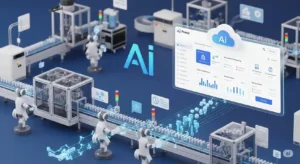7 tips to deliver better online grocery shopping
The boom of online grocery shopping has been a long time coming. In 2015, more than one third (37%) of shoppers in Asia-Pacific regularly shopped for food online, Nielsen reports. Although in the rest of the world online grocery shopping was less common, there was already a growing trend, which has only become more pronounced. According to projections by Deutsche Bank, online grocery shopping is expected to expand at a compound annual growth rate (CAGR) of 28.2%, which is significant if compared with a 2.5% CAGR for total grocery sales. Supermarkets have had time to prepare for the shift to online, but not all of them have stayed on top of trends. When, due to necessity, consumers worldwide moved massively towards online shopping, some supermarkets found themselves suddenly out of the race. Today, the businesses who didn’t believe and invest in omni-channel are facing the harsh consequences of their decisions. Online shopping has been gaining ground quickly among all ages and geographies, and there is no reason to believe this popularity will fade in the upcoming months. This means there is no better time than today to invest in improving your e-commerce capabilities. Here are seven tips to get you started. 1. Focus on speed and ease of use Simplicity and usability of the platform should be your top goals: Make it easy for people to register, find the products they need, add items to the cart, review and edit the order and pay. Enable filtering per sub-groups of items to speed up search. Your customers would rather not have scroll through a hundred-item long list of “bread and pastries” to find the apricot-filled croissants they are looking for. Make sure you include all relevant product information. Feature high-quality pictures, and clearly label brand names, price, ingredients with nutritional value and allergens, and pack size. Include expiry dates wherever possible. If a shopper knows that the Greek yogurt lasts three more weeks, they might buy three packs instead of one. Support returning shoppers. Give customers the possibility to recreate previous orders quickly and activate shopping lists where people can add staples and family favorites. Allow registered customers to see their buying history and to share the basket with other family members. Ensure short page load times. If your site is too slow to load, buyers may abandon their cart without completing the purchase. 2. State the important information up front How annoyed will your online shopper be when he finds out that his postcode is not eligible for delivery, after he spent a full hour adding products to the cart? For retailers, it pays off to be clear and provide all needed information from the start. Buyers should be aware of shipping prices and times, delivery restrictions, geographical areas included in the service and special conditions before they have added a single item to their cart. When it’s time to check out, make sure that all the steps are clearly labelled, and that shoppers know what’s coming up in the process. Consider adding lines that clarify where the customer is at, such as “You can still modify your order in the next step” or “By clicking here, you confirm your order and accept to pay. You won’t be able to modify your order afterwards”. Consider adding a progress bar that shows the various steps (“Customer details” -> “Shipping” -> “Payment information” -> “Review order” -> “Complete and pay”). Once the order has been placed, include an “order completed” page where all the key information is summarized: items purchased, delivery and payment information, time of order, and what the customer should expect (an email? A call? A link to track the shipment?). 3. Think of the different platforms Today, more consumers access websites from mobiles than from computers. According to data from marketing site The Drum, last year 63% of traffic and 53% of sales on retailers’ eCommerce sites happened via mobile. As the preference for mobile shopping is only going to get more common, you should ensure that your website performs well on mobile devices. Here are some questions you should ask yourself: Is my e-commerce site responsive? Are the buttons big and easy to tap? Are the text fields large and easy to type into? Are pictures clear? Can people easily zoom in to see extra details? Is it easy to move through different images? Is all information visible on small screens, or do some lines disappear or end up off screen? Can customers easily move between items and categories? Is the payment process simple and easy to follow? Many consumers start a transaction on a device and continue it on another one. If when they resume the transaction they lose all the items they had already added to the cart, they may not be bothered to start over again – and you’ll lose that transaction. Enable saving the cart for logged in customers, so they can easily pick up transactions on different devices, at their pace and convenience. 4. Make it easy to navigate On your e-commerce site you can easily display a larger product selection than in your physical locations. If you decide to go for the “endless aisles” style, make sure you organize the selection so that customers can easily find what they need. Offer top-level categories that can be accessed from the top menu. Enable customers to filter and sort items by price, brand, group, review scores, etc. Make sure information is easy to skim through. Use bullet points and organize information consistently (first ingredients, then package size, then weight, then expiry date…) so users can find what they need at a glance. Make sure the “buy” button is clearly visible. Add a checkmark or confirmation text to clarify when an item has been added to the basket. Include a search function with predictive suggestions and auto corrects (“Did you mean…?”). Your customer may call “cilantro” what you call “coriander” on your site; you wouldn’t want her to leave without it just because the search gave no results. 5. Offer flexible delivery Offer several delivery options and time slots, and be specific with your delivery times. The best practice is to offer precise delivery windows, and allow people pick the one that best fits their schedule. The more precise you are, the more likely you are customers will decide to shop with you. Nielsen’s “Global Connected Commerce Report” advises offering 30-minute interval windows – provided you can
7 tips to deliver better online grocery shopping Read More »




